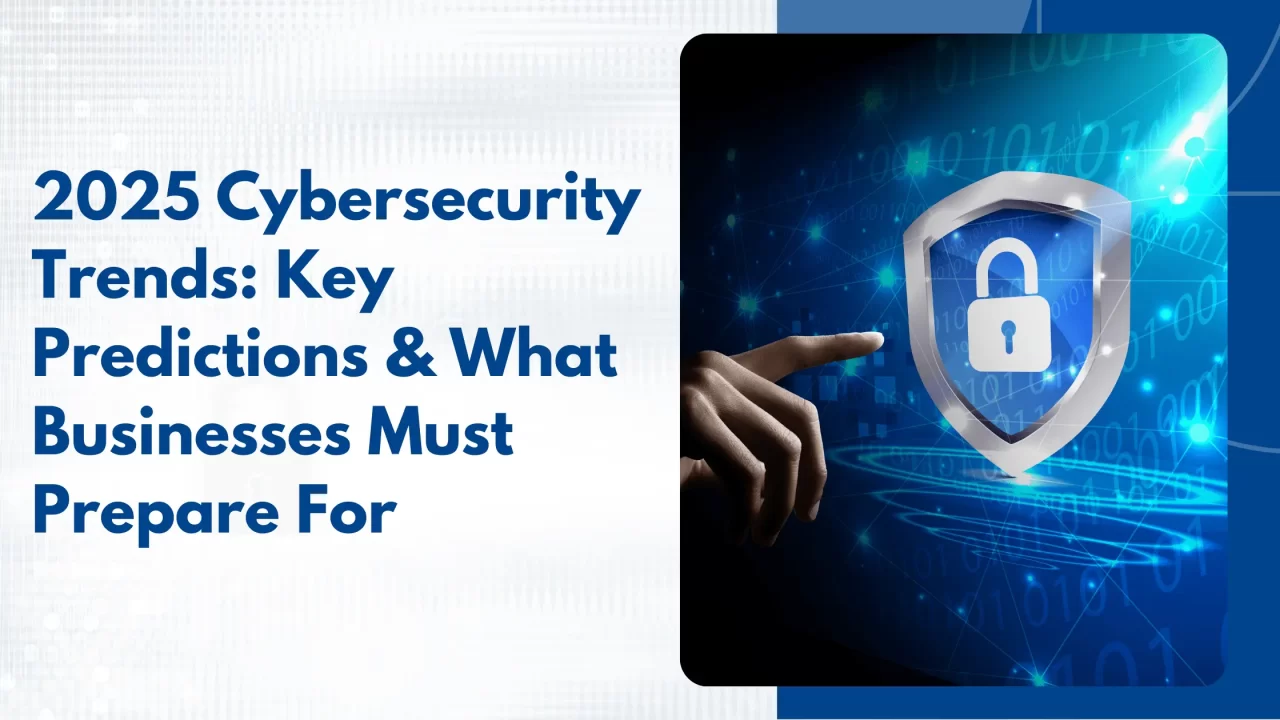As we move deeper into the digital age, cybersecurity is no longer just an IT concern—it’s a critical pillar of business resilience and reputation. The threat landscape is evolving rapidly, with cyberattacks becoming more sophisticated, frequent, and damaging. To navigate the future successfully, businesses must understand the emerging trends and prepare to combat new and complex security challenges.
In this blog, we delve into the evolving cybersecurity landscape, share key predictions for top threats and security challenges in 2025, and highlight best practices businesses must adopt to stay ahead.
The Evolving Cybersecurity Landscape
1. Increased Attack Sophistication
Cybercriminals are leveraging advanced technologies like AI and machine learning to craft smarter, more targeted attacks. Threats such as deepfake phishing, polymorphic malware, and AI-generated social engineering attacks will become more prevalent.
2. Expansion of the Attack Surface
With the growth of remote work, IoT devices, and cloud adoption, businesses are dealing with a larger and more complex attack surface. Every new device, application, or network extension becomes a potential vulnerability.
3. Rise of State-Sponsored Cyber Warfare
Geopolitical tensions are increasingly spilling into the digital world. State-sponsored cyberattacks targeting critical infrastructure, financial systems, and national security interests are expected to intensify.
4. Growing Regulatory Pressure
Governments worldwide are enacting stricter data protection laws, making compliance more complex. Non-compliance could result in heavy fines, operational disruption, and reputational harm.
5. Human Element Remains a Weak Link
Despite technological advancements, human error continues to be a major factor in cybersecurity incidents. From phishing scams to accidental data leaks, employee awareness and training remain critical.
Predictions for Top Threats and Security Challenges in 2025
1. AI-Driven Cyberattacks
Just as businesses are using AI for threat detection, cybercriminals are using AI to automate attacks, craft convincing phishing emails, and evade traditional security defences. Expect a surge in AI-driven, highly adaptive malware and ransomware.
2. Ransomware Evolution
Ransomware attacks are becoming more targeted and destructive. In 2025, we anticipate a rise in “double extortion” tactics—where attackers not only encrypt data but also threaten to leak sensitive information publicly if ransoms aren’t paid.
3. Supply Chain Attacks
Attackers are increasingly targeting third-party vendors and suppliers to infiltrate larger organisations. These “supply chain attacks” will become more frequent and harder to detect.
4. IoT Vulnerabilities
As more smart devices connect to enterprise networks, securing the Internet of Things (IoT) ecosystem will be a significant challenge. Many IoT devices have weak or non-existent security measures.
5. Cloud Security Challenges
Cloud misconfigurations, insecure APIs, and inadequate access controls will remain leading causes of data breaches. Businesses must enhance their cloud security strategies to prevent exposure.
6. Insider Threats
Whether malicious or accidental, insider threats will continue to rise. Organisations must monitor internal activity and implement strict access controls.
7. Zero-Day Exploits
Zero-day vulnerabilities—unknown flaws exploited by attackers—will continue to be a serious threat. Businesses must improve their ability to detect and respond to these vulnerabilities quickly.
Best Practices for Staying Ahead of Cyber Threats
1. Adopt a Zero Trust Architecture
Zero Trust operates on the principle of “never trust, always verify.” Every access request must be authenticated and authorised, reducing the risk of unauthorised access.
2. Invest in AI-Powered Threat Detection
Leverage AI and machine learning tools to monitor network activity, detect anomalies, and respond to threats in real-time.
3. Implement Multi-Layered Security Controls
Don’t rely on a single security measure. Combine firewalls, antivirus software, intrusion detection systems, encryption, and access controls for comprehensive protection.
4. Regular Employee Training
Educate employees on cybersecurity best practices, phishing detection, password hygiene, and safe browsing habits. A well-informed workforce is a critical line of defense.
5. Conduct Regular Risk Assessments
Identify and prioritise vulnerabilities through regular security audits and penetration testing. Use findings to strengthen security posture.
6. Strengthen Cloud Security Posture
Apply strong access controls, encrypt sensitive data, and conduct regular audits of cloud environments. Choose cloud providers that adhere to high security standards.
7. Develop an Incident Response Plan
Prepare a comprehensive incident response plan that outlines how to detect, contain, and recover from cyber incidents. Test and update the plan regularly.
8. Monitor the Supply Chain
Vet third-party vendors for their cybersecurity practices and monitor their interactions with your systems. Apply stringent security requirements to partners and suppliers.
9. Embrace Continuous Compliance
Treat compliance as an ongoing process, not a one-time event. Keep pace with regulatory changes and ensure your security practices align with evolving standards.
10. Invest in Cyber Insurance
Consider cyber insurance policies to mitigate financial losses in the event of a breach or cyberattack.
Conclusion
The cybersecurity landscape in 2025 will be characterised by faster, smarter, and more relentless threats. Businesses must not only anticipate these changes but proactively build resilience through advanced technologies, robust policies, and a culture of cybersecurity awareness.
By understanding the emerging trends and implementing best practices today, organisations can ensure they are not just reacting to threats—they are staying ahead of them.
Cybersecurity isn’t just about protection anymore; it’s about strategic survival. Prepare now, because the future won’t wait.



